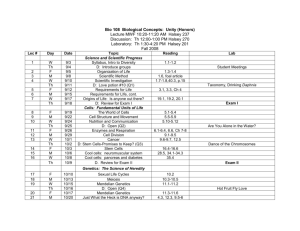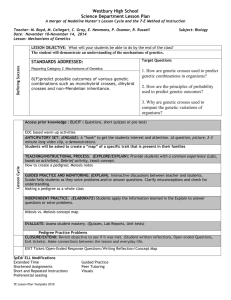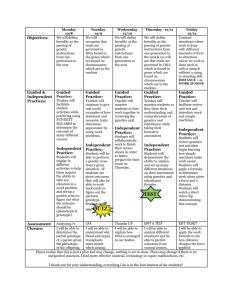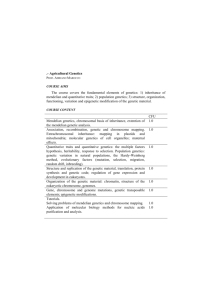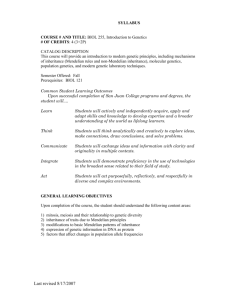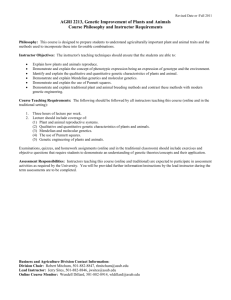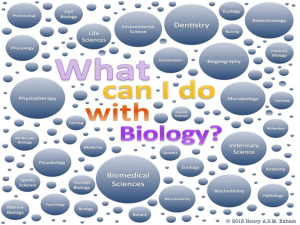Lesson Plan - WK 25 - Mount Carmel Academy
advertisement
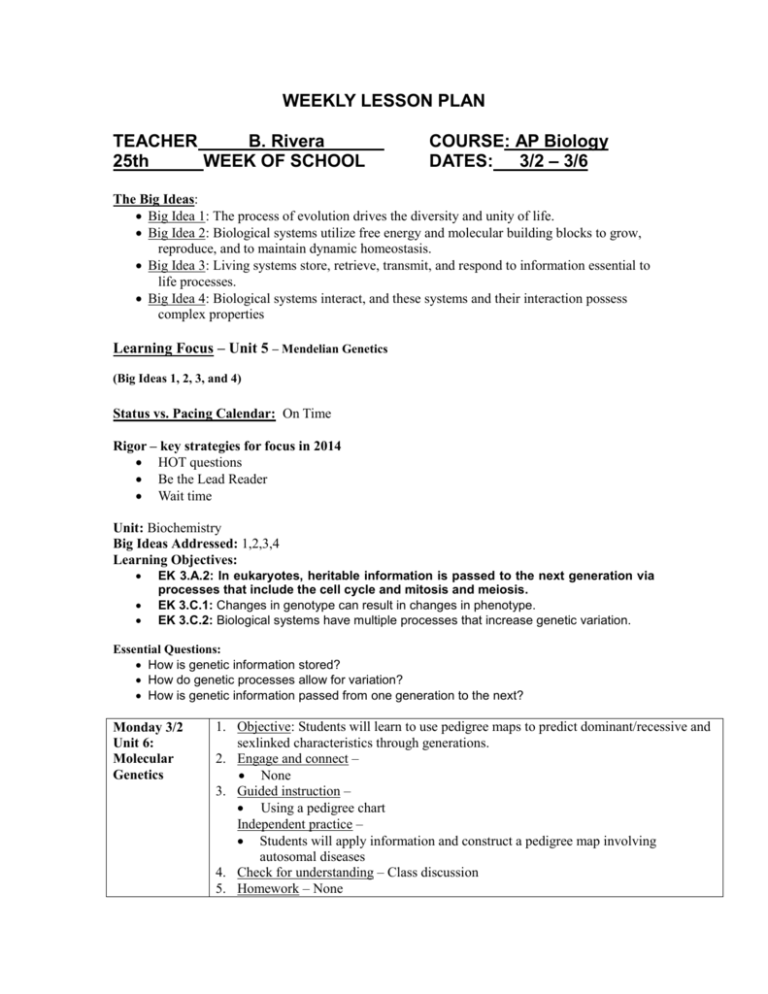
WEEKLY LESSON PLAN TEACHER B. Rivera 25th WEEK OF SCHOOL COURSE: AP Biology DATES: 3/2 – 3/6 The Big Ideas: Big Idea 1: The process of evolution drives the diversity and unity of life. Big Idea 2: Biological systems utilize free energy and molecular building blocks to grow, reproduce, and to maintain dynamic homeostasis. Big Idea 3: Living systems store, retrieve, transmit, and respond to information essential to life processes. Big Idea 4: Biological systems interact, and these systems and their interaction possess complex properties Learning Focus – Unit 5 – Mendelian Genetics (Big Ideas 1, 2, 3, and 4) Status vs. Pacing Calendar: On Time Rigor – key strategies for focus in 2014 HOT questions Be the Lead Reader Wait time Unit: Biochemistry Big Ideas Addressed: 1,2,3,4 Learning Objectives: EK 3.A.2: In eukaryotes, heritable information is passed to the next generation via processes that include the cell cycle and mitosis and meiosis. EK 3.C.1: Changes in genotype can result in changes in phenotype. EK 3.C.2: Biological systems have multiple processes that increase genetic variation. Essential Questions: How is genetic information stored? How do genetic processes allow for variation? How is genetic information passed from one generation to the next? Monday 3/2 Unit 6: Molecular Genetics 1. Objective: Students will learn to use pedigree maps to predict dominant/recessive and sexlinked characteristics through generations. 2. Engage and connect – None 3. Guided instruction – Using a pedigree chart Independent practice – Students will apply information and construct a pedigree map involving autosomal diseases 4. Check for understanding – Class discussion 5. Homework – None Tuesday 3/3 Unit 6: Mendelian Genetics 1. Objective: Unit Test: TLW complete unit exam over genetics, sex-linked problems and pedigree. 2. Engage and connect – None 3. Guided instruction – None Independent practice – None 4. Check for understanding – Class discussion 5. Homework – None Wednesday 3/4 Unit 6: Mendelian Genetics 1. Objective: Unit Test: TLW review exams, identifying key terms and marking corrections. 2. Engage and connect – None 3. Guided instruction – Explanation and assistance regarding exam questions will be given at student request. Independent practice – Participation and questions required by students, peer assistance encouraged. 4. Check for understanding – Class discussion 5. Homework – None Thursday 3/5 Unit 6: Mendelian Genetics 1. Objective: Introduction to genetic recombination and gene mapping.. 2. Engage and connect – What is gene mapping? 3. Guided instruction – Lecture: Gene Mapping Independent practice – Notes and class participation 4. Check for understanding – Peer assistance and discussion 5. Homework – Bozeman Video Homework: Gene Mapping Practice Friday 3/6 Unit 6: Mendelian Genetics 1. Objective: The learner will complete the Virtual Fly Lab and apply information to predict outcomes. 2. Engage and connect – Why the fly? 3. Guided instruction – Students will complete digital lab Independent practice – Students will apply gathered information to a Chi Square table. 4. Check for understanding – Peer assistance and discussion 5. Homework – Complete data calculations and apply data to table. Upon request by any special needs student, they can receive additional time to complete their assignments. Also, I am available every morning and most afternoons to provide additional assistance to any student who requests it. Depending on their specific request or my assessment of their involvement and understanding of the subject matter in the classroom, special needs students are given preferential seating. Worksheets are used to prepare for each major test. How will you assess learning and mastery? Daily Observations during student group and independent work time, lab work, and board work Class participation and involvement in discussions and labs Weekly Homework Labs, Focus Activities, and/or tests Demonstrations or Labs: Lab Activities – TBD Test: - TBD


